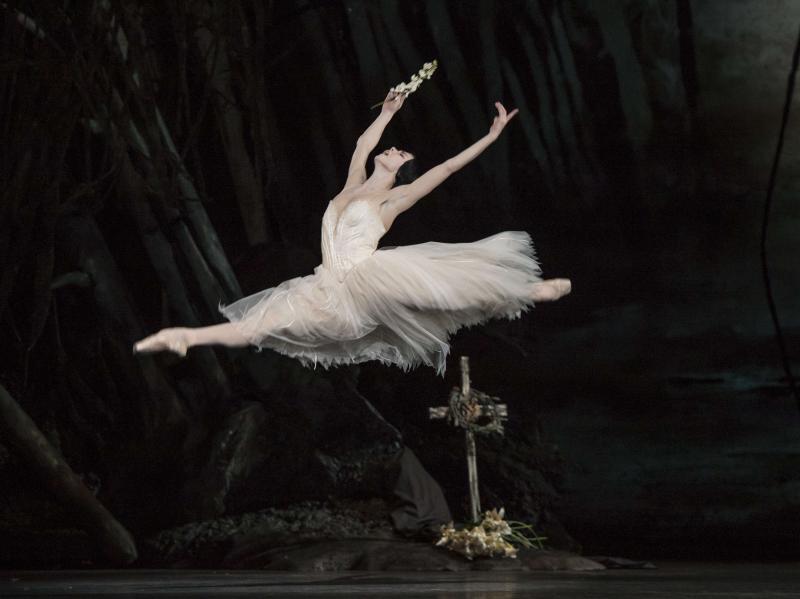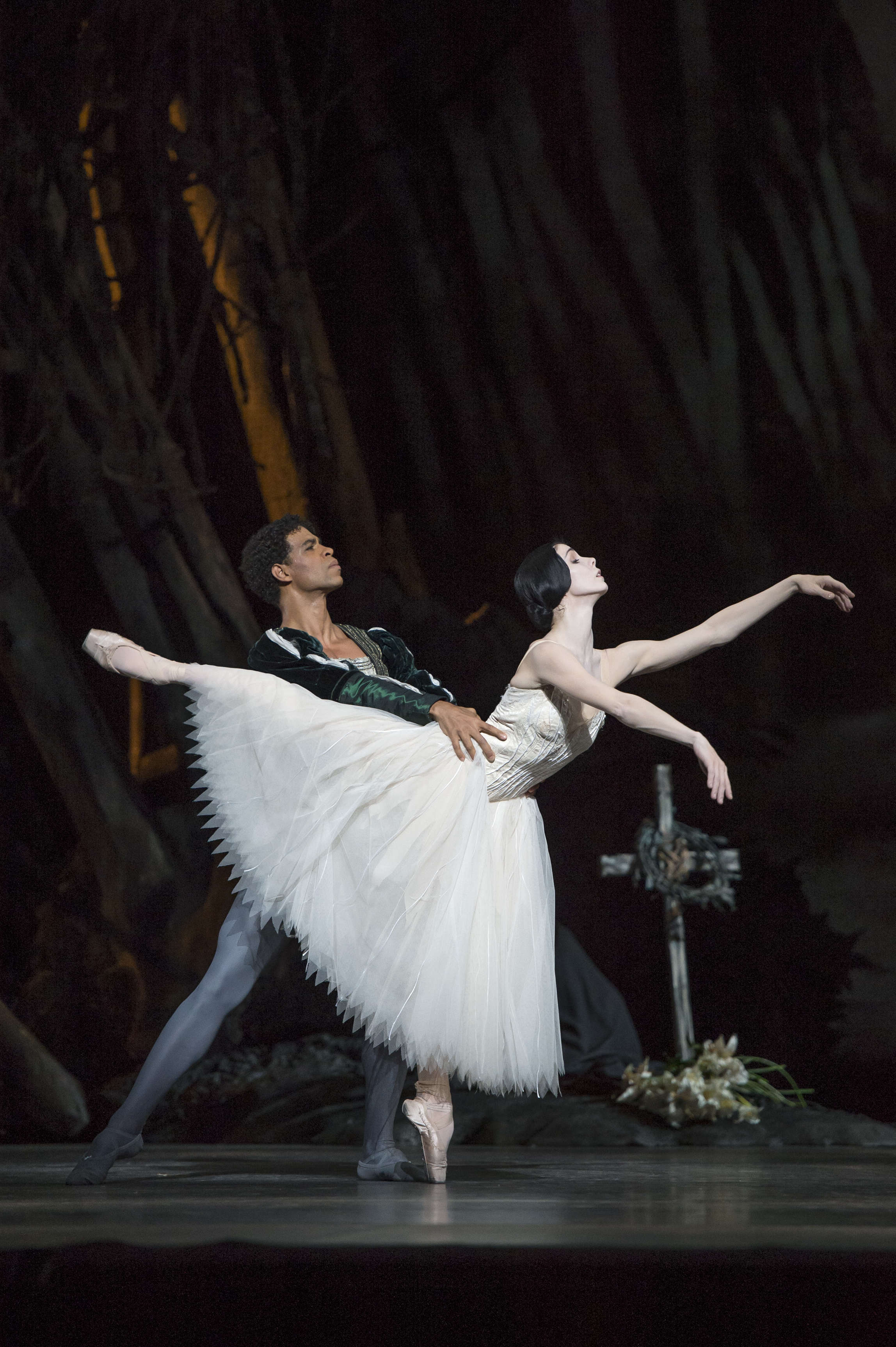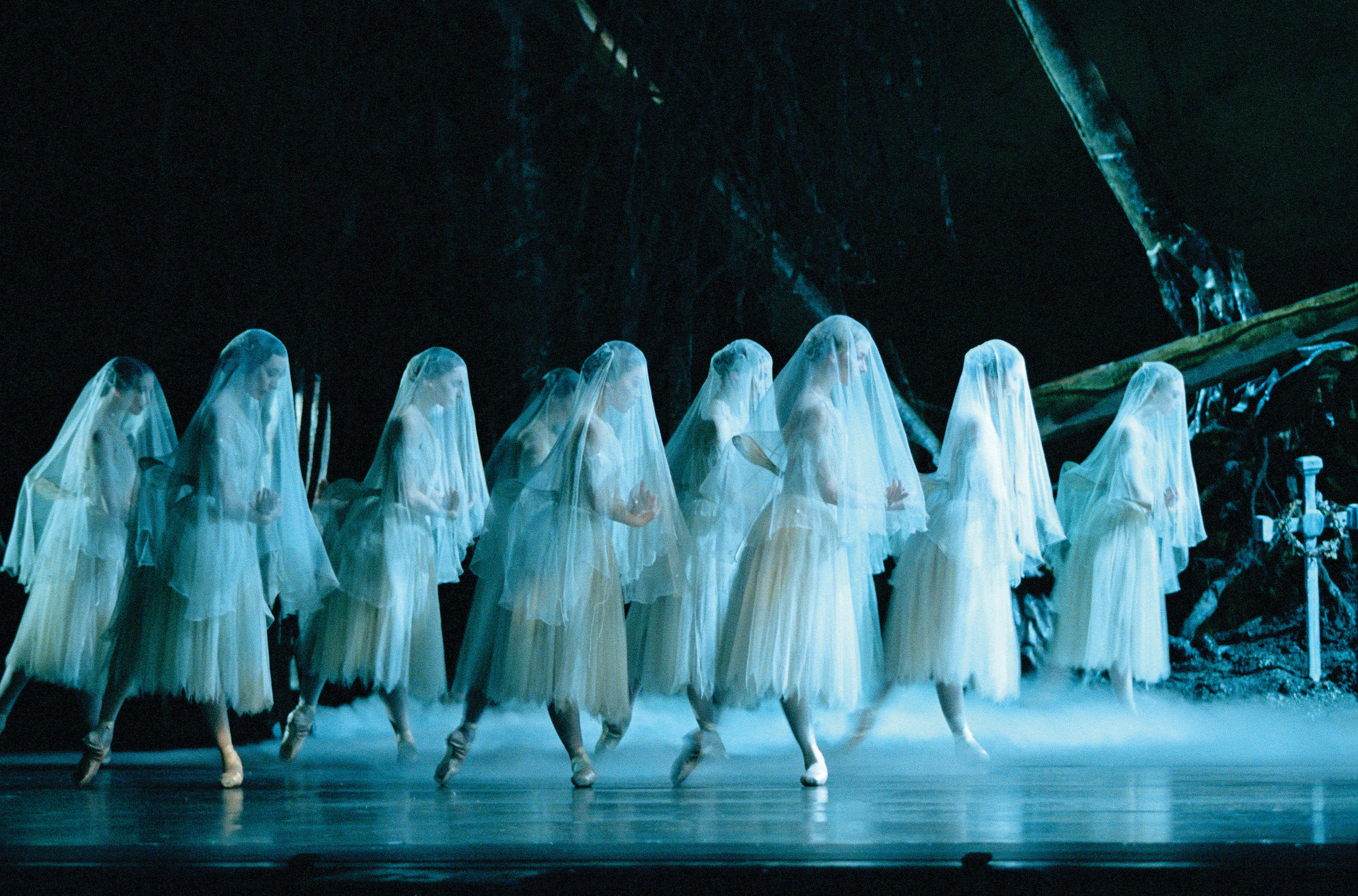Giselle, Royal Ballet | reviews, news & interviews
Giselle, Royal Ballet
Giselle, Royal Ballet
Natalia Osipova is one of the great Giselle interpreters of the age

Ah, Giselle. Despite being cobbled together from a huge stack of 19th-century literary and dramatic tropes – fans of La Sylphide, Robert le Diable, Lucia di Lammermoor, Walter Scott and German Romanticism will feel right at home – and having a score from Adolphe Adam that is definitely not in the first league of ballet music, Giselle is endlessly compelling: the ballet sticks in your mind.
Natalia Osipova as Giselle draws the kind of awestruck, reverent reaction from ballet lovers that still breathes from contemporary descriptions of Marie Taglioni or Vaslav Nijinsky. Osipova’s elevation is already legendary, but her technique at high speed is an equal source of delight. Lovers of music can find the plodding tempi of modern ballet performances painful, but Osipova in the first act is like quicksilver: I don’t doubt she could do it all at concert speed and still look unhurried. And this prodigious dancing talent is harnessed to an equal force of acting. Alive, her Giselle is wide-eyed, sweet but ominously sensitive. Dying, her convulsively trembling fingers and ashen face have the whole house holding its breath. And as the undead Wili, she is mesmerising: hiding those luminous black eyes to show her transition to the spirit world, and floating like smoke through those back-bending sylph jumps, where she hovers like an apostrophe in the air. Purists might criticise Osipova’s mad scene as too febrile, or the spinning arabesque of her first entrance as a Wili as too fast, but no-one in the theatre last night could doubt they were watching one of the great Giselle interpreters of our age.
 It may be true that “no-one ever staged Giselle because they had a damn fine Albrecht” – but it is also true that having one helps. Enormously. In the first act, the unexpected passion and sensibility of a peasant girl turns the nobleman-in-disguise comedy staple into a tragedy; in the second, it is actually the unexpected sensibility of the nobleman that calls out enough remembered humanity from the wraith of Giselle for it to repulse his tragic doom and allow him, novellistically, to walk off the field. The power and the fate of the two characters may be asymmetrical – Giselle humble but certain, dying but transcendent; Albrecht, powerful but vacillating, saved but untriumphant – but the connection between them is what transforms a good production of Giselle (and Peter Wright's for the Royal Ballet is tip-top) into a great event.
It may be true that “no-one ever staged Giselle because they had a damn fine Albrecht” – but it is also true that having one helps. Enormously. In the first act, the unexpected passion and sensibility of a peasant girl turns the nobleman-in-disguise comedy staple into a tragedy; in the second, it is actually the unexpected sensibility of the nobleman that calls out enough remembered humanity from the wraith of Giselle for it to repulse his tragic doom and allow him, novellistically, to walk off the field. The power and the fate of the two characters may be asymmetrical – Giselle humble but certain, dying but transcendent; Albrecht, powerful but vacillating, saved but untriumphant – but the connection between them is what transforms a good production of Giselle (and Peter Wright's for the Royal Ballet is tip-top) into a great event.
Sadly, Carlos Acosta (pictured above left) was not the man to provide that connection last night. Although his technique has been going downhill for years, audiences can still be seduced by his charisma in roles that play to his strengths, like the cheery, canary-clad Colas in La Fille Mal Gardéé or the chirpy Basilio of Don Quixote. The morally ambivalent but sexually fascinating Albrecht, though, seems beyond his powers. Acosta’s acting is stilted, his dancing not much above marking, except when he flings himself down, exhausted before Myrthe, the Wilis’ merciless Queen. Let’s hope, if the Royal Ballet is determined to pair Osipova with guest principals rather than in-house stars, that they look further afield in future.
 Hikaru Kobayashi played Myrthe as an otherwordly and terrifying, but also strangely peremptory Queen, her command over the Wilis conveyed mostly through sharply flicked arms rather than regal force of personality. The corps de ballet were beautifully eerie as the massed Wilis, whose first entrance (pictured right) in veils, heads tipped forward in a disturbing pastiche of the wedding days they were denied in life, is particularly effective against John Macfarlane’s creepy pine forest set, all uprooted trees and smudgy, angry sky.
Hikaru Kobayashi played Myrthe as an otherwordly and terrifying, but also strangely peremptory Queen, her command over the Wilis conveyed mostly through sharply flicked arms rather than regal force of personality. The corps de ballet were beautifully eerie as the massed Wilis, whose first entrance (pictured right) in veils, heads tipped forward in a disturbing pastiche of the wedding days they were denied in life, is particularly effective against John Macfarlane’s creepy pine forest set, all uprooted trees and smudgy, angry sky.
Mention must go to Deirdre Chapman for her magnetic presence as Berthe, Giselle’s wise, suspicious, protective mother, chillingly miming the legend of the Wilis to warn her daughter against seduction by the impostor Albrecht. And there was sterling work from Valentino Zucchetti as the lead man in the first act pas de six, performing an exhausting petit allegro variation with flair and enviable technique. All this was accompanied in competent but hardly inspiring fashion by the orchestra of the Royal Opera House under Boris Gruzin, who brought out the workaday qualities of Adam’s score more than its occasional bursts of melodic richness.
It's becoming a cliché on theartsdesk to say that the evening was Osipova's – and thanks to the many strengths of Peter Wright's production that would not be entirely true – but alive, dying or undead, her Giselle is an elemental force. London is lucky to have this chance to see it.
- Giselle is at the Royal Opera House until 10 February. The performance on Monday 27 January (starring Natalia Osipova and Carlos Acosta) is being broadcast live to cinemas as part of the ROH Live Cinema Season.
rating
Buy
Explore topics
Share this article
The future of Arts Journalism
You can stop theartsdesk.com closing!
We urgently need financing to survive. Our fundraising drive has thus far raised £49,000 but we need to reach £100,000 or we will be forced to close. Please contribute here: https://gofund.me/c3f6033d
And if you can forward this information to anyone who might assist, we’d be grateful.

Subscribe to theartsdesk.com
Thank you for continuing to read our work on theartsdesk.com. For unlimited access to every article in its entirety, including our archive of more than 15,000 pieces, we're asking for £5 per month or £40 per year. We feel it's a very good deal, and hope you do too.
To take a subscription now simply click here.
And if you're looking for that extra gift for a friend or family member, why not treat them to a theartsdesk.com gift subscription?
more Dance
 'We are bowled over!' Thank you for your messages of love and support
Much-appreciated words of commendation from readers and the cultural community
'We are bowled over!' Thank you for your messages of love and support
Much-appreciated words of commendation from readers and the cultural community
 R:Evolution, English National Ballet, Sadler's Wells review - a vibrant survey of ballet in four acts
ENB set the bar high with this mixed bill, but they meet its challenges thrillingly
R:Evolution, English National Ballet, Sadler's Wells review - a vibrant survey of ballet in four acts
ENB set the bar high with this mixed bill, but they meet its challenges thrillingly
 Like Water for Chocolate, Royal Ballet review - splendid dancing and sets, but there's too much plot
Christopher Wheeldon's version looks great but is too muddling to connect with fully
Like Water for Chocolate, Royal Ballet review - splendid dancing and sets, but there's too much plot
Christopher Wheeldon's version looks great but is too muddling to connect with fully
 iD-Reloaded, Cirque Éloize, Marlowe Theatre, Canterbury review - attitude, energy and invention
A riotous blend of urban dance music, hip hop and contemporary circus
iD-Reloaded, Cirque Éloize, Marlowe Theatre, Canterbury review - attitude, energy and invention
A riotous blend of urban dance music, hip hop and contemporary circus
 How to be a Dancer in 72,000 Easy Lessons, Teaċ Daṁsa review - a riveting account of a life in dance
Michael Keegan-Dolan's unique hybrid of physical theatre and comic monologue
How to be a Dancer in 72,000 Easy Lessons, Teaċ Daṁsa review - a riveting account of a life in dance
Michael Keegan-Dolan's unique hybrid of physical theatre and comic monologue
 A Single Man, Linbury Theatre review - an anatomy of melancholy, with breaks in the clouds
Ed Watson and Jonathan Goddard are extraordinary in Jonathan Watkins' dance theatre adaptation of Isherwood's novel
A Single Man, Linbury Theatre review - an anatomy of melancholy, with breaks in the clouds
Ed Watson and Jonathan Goddard are extraordinary in Jonathan Watkins' dance theatre adaptation of Isherwood's novel
 Peaky Blinders: The Redemption of Thomas Shelby, Rambert, Sadler's Wells review - exciting dancing, if you can see it
Six TV series reduced to 100 minutes' dance time doesn't quite compute
Peaky Blinders: The Redemption of Thomas Shelby, Rambert, Sadler's Wells review - exciting dancing, if you can see it
Six TV series reduced to 100 minutes' dance time doesn't quite compute
 Giselle, National Ballet of Japan review - return of a classic, refreshed and impeccably danced
First visit by Miyako Yoshida's company leaves you wanting more
Giselle, National Ballet of Japan review - return of a classic, refreshed and impeccably danced
First visit by Miyako Yoshida's company leaves you wanting more
 Quadrophenia, Sadler's Wells review - missed opportunity to give new stage life to a Who classic
The brilliant cast need a tighter score and a stronger narrative
Quadrophenia, Sadler's Wells review - missed opportunity to give new stage life to a Who classic
The brilliant cast need a tighter score and a stronger narrative
 The Midnight Bell, Sadler's Wells review - a first reprise for one of Matthew Bourne's most compelling shows to date
The after-hours lives of the sad and lonely are drawn with compassion, originality and skill
The Midnight Bell, Sadler's Wells review - a first reprise for one of Matthew Bourne's most compelling shows to date
The after-hours lives of the sad and lonely are drawn with compassion, originality and skill
 Ballet to Broadway: Wheeldon Works, Royal Ballet review - the impressive range and reach of Christopher Wheeldon's craft
The title says it: as dancemaker, as creative magnet, the man clearly works his socks off
Ballet to Broadway: Wheeldon Works, Royal Ballet review - the impressive range and reach of Christopher Wheeldon's craft
The title says it: as dancemaker, as creative magnet, the man clearly works his socks off
 The Forsythe Programme, English National Ballet review - brains, beauty and bravura
Once again the veteran choreographer and maverick William Forsythe raises ENB's game
The Forsythe Programme, English National Ballet review - brains, beauty and bravura
Once again the veteran choreographer and maverick William Forsythe raises ENB's game

Add comment